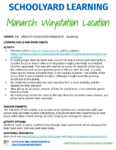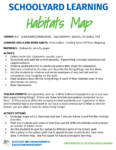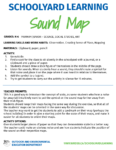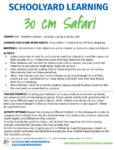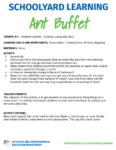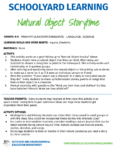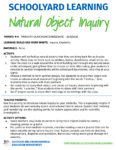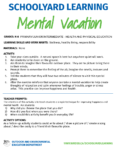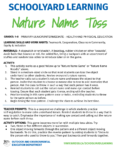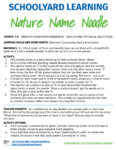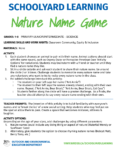Why do honey bees die when they sting?
The stinger of the honey bee has barbs on it that allow it to stick in an animal’s skin, but prevent it from being removed. The stinger is attached to some of the bee’s organs, so when the bee pulls away it pulls out some of its guts. It dies pretty quickly.
Is it legal for a beekeeper to keep a honey bee hive within a city?
There is a regulation in Ontario that says that beehives must be kept at least 30 metres from a property line or a road. Not many people in cities can keep bees 30 metres from their neighbours’ yards.
How do bees make honey?
Bees gather nectar from flowers. The nectar mixes with enzymes (chemicals) in the bees’ stomachs. Then the bee puts the nectar into the honeycomb. Some of the water evaporates, and that is honey. Honey is nectar that has been in a bee’s stomach, and some of the water has evaporated.
How many bees do you need to produce honey?
A bee will make less than 1 gram of honey during its lifetime. It takes about a dozen bees working their whole lives to make a spoonful of honey.
How do honey bees pollinate flowers?
Honey bees are hairy. When a honey bee visits a flower, pollen gets stuck in the hairs. When the bee visits another flower, some pollen can fall off into the stigma of that flower. That starts the process of a seed forming. That’s pollination.
How long have honeybees lived on earth?
There is an argument between scientists. Some think bees have been around for about 65 million years. Some think it’s much longer – maybe 130 million years.
How do the bees make a Queen?
If the queen dies, leaves the hive, or is getting weak, the bees will start feeding some larvae extra royal jelly. Royal jelly is a hormone which, if the larvae get it at a certain stage of development, turns them into queens. The first queen to emerge as an adult finds where the other queens are developing, and stings them. Queen bees do not have barbs on their stingers, so they don’t die when they sting.
How do you tell worker bees from male bees?
The male bees, called “drones,” are a little bigger than the females. They also have more hair than females and larger eyes. The drones have no stingers.
Is it true that the female worker bees do all the work?
It is true! But less than one percent of the bees in a hive are male. The hive produces a few males so that they can mate with queens from different hives.
Why do bees sting people?
It is difficult to get a honey bee to sting. They die if they sting, so they definitely do not want to sting you. They only sting to protect the hive. You would need to be close to a hive, and causing a disturbance to be stung. Wasps are much more likely to sting than honey bees.
Are the bees currently in our area (Waterloo Region) native to our area, or were they brought in/did they move in from somewhere else?
There are no honey bees native to North America. There are about seven types of honey bees in the world, and the ones that beekeepers have are usually from Europe.
What kind of bees live in our region?
Lots! Honey bees, sweat bees, miner bees, carpenter bees, bumble bees, solitary bees, digger bees, leafcutter bees, mason bees. Native bees are more important for pollination than honey bees
How are bees different from wasps?
Bees are usually hairier than wasps. Wasps bodies tend to be shinier. Wasps have bodies that get narrow at their waists. Unlike honey bees, wasps do not lose their stingers when they sting. Wasps don’t make honey, so the whole colony of wasps cannot survive the winter. The queen wasp hibernates and the others die.
How do bees make their beehives?
Honey bees make wax in glands in their abdomens. They remove small flakes of wax and use their mouths to form the wax into honeycomb. A hive in the wild will usually be located in a hollow tree.
What (if any) impact are insecticides having on bees in our region?
A big problem for honey bees is that so many plants grown by humans have pesticides on them. If the bees gather pollen from flowers, and that pollen has pesticide on it, the bees bring the pesticide back to the hive, and feed it to the larvae. Sometimes bees kept in cities are affected less by pesticides than bees in the country. Bees will travel a few kilometres from their homes to collect pollen and nectar, so probably every hive is affected by pesticides.
How can we be bee friendly in our own yards in this region?
Great question! Avoid using pesticides on your lawns and gardens. Avoid buying flowers from nurseries that have been treated with pesticides. Buy organic food that his been grown without pesticides. Leave an area of your property un-mowed so that native wildflowers grow. Plant pollinating plants that bees like. Leave dandelions in your lawn.
How do you get the bees to colonize in the hive?
The hives we use are designed in a way that bees really like. If you put a queen in a hive with a few thousand workers, they will usually stay. The hive protects them from rain and already has some honeycomb for them to start with.
I want to know more about why bees are so important.
A lot of our food is pollinated by bees. If we did not have pollinators like honey bees, we would not have:
- Mangos
- Apples
- Kiwi Fruit
- Plums
- Peaches
- Nectarines
- Guava
- Rose Hips
- Pomegranites
- Pears
- Black and Red Currants
- Alfalfa
- Okra
- Strawberries
- Onions
- Cashews
- Cactus
- Prickly Pear
- Apricots
- Allspice
- Avocados
- Passion Fruit
- Lima Beans
- Kidney Beans
- Adzuki Beans
- Green Beans
- Orchid Plants
- Custard Apples
- Cherries
- Celery
- Coffee
- Walnut
- Cotton
- Lychee
- Flax
- Acerola – used in Vitamin C supplements
- Macadamia Nuts
- Sunflower Oil
- Goa beans
- Lemons
- Buckwheat
- Figs
- Fennel
- Limes
- Quince
- Carrots
- Persimmons
- Palm Oil
- Loquat
- Durian
- Cucumber
- Hazelnut
- Cantaloupe
- Tangelos
- Coriander
- Caraway
- Chestnut
- Watermelon
- Star Apples
- Coconut
- Tangerines
- Boysenberries
- Starfruit
- Brazil Nuts
- Beets
- Mustard Seed
- Rapeseed
- Broccoli
- Cauliflower
- Cabbage
- Brussels Sprouts
- Bok Choy (Chinese Cabbage)
- Turnips
- Congo Beans
- Sword beans
- Chili peppers, red peppers, bell peppers, green peppers
- Papaya
- Safflower
- Sesame
- Eggplant
- Raspberries
- Elderberries
- Blackberries
- Clover
- Tamarind
- Cocoa
- Black Eyed Peas
- Vanilla
- Cranberries
- Tomatoes
- Grapes
- (from Wikipedia)
Have you ever found the queen bee?
Yes! She is only a little larger than the worker bees, and has a longer abdomen, so she is hard to find. Some beekeepers put a little drop of paint on the queen’s thorax so that they can see her more easily.
I wanna know if honey bees are dangerous to humans.
Nah.
Do pesticides contaminate the honey?
Yes. A recent study found that 75% of honey had pesticide residue in them, mostly from a group of pesticides called neonicotinoids, used on crops such as corn.
Why does the queen only mate once?
Probably because she needs to fly to mate, and flying around in the world is dangerous. After mating with several males, she is able to fertilize all of the eggs she lays in a lifetime, maybe more than 500,000.
Do bees drink water?
Yes. During dry periods, some beekeepers put water in front of their hives for bees to drink. You may see bees drinking at your bird bath or in your eavestroughs.
Does the size of the bee affect the amount of honey they produce?
I don’t think so. Most honey bees are the same size.
Do wasps pollinate flowers as much as bees?
Wasps do eat pollen, and are also pollinators. However, they do not contribute to pollination as much as bees.
How many species of honey bees are there?
There are about 20,000 species of bees in the world, but only about seven make honey.
How long do honey bees live?
Bees born in the summer only live about six weeks as adults. Bees born in the fall can survive the winter, living sometimes six months or more.
How many bees live in a hive?
At the end of the winter, there may be around 15,000 bees in a hive, growing to 50,000-60,000 during the middle of the summer.
How much honey do bees make?
One hive can make 60 kilograms of honey in a year. In an average year, we can take about 40 kilograms for ourselves, which leaves the bees enough food to survive through the winter.
